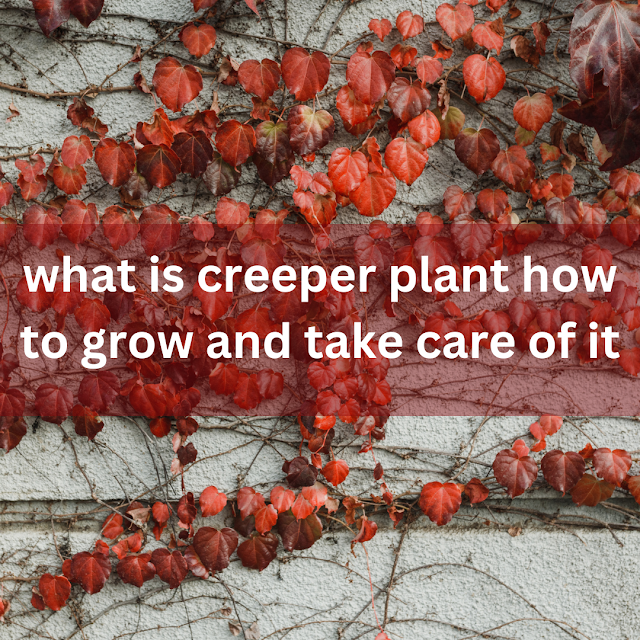Creeper plants are an excellent addition to any garden or indoor space, adding a natural and lush look to the environment. These plants have a unique growth habit, with long and flexible stems that can climb over other plants or structures. In this blog, we will discuss what creeper plants are, how to grow them, and the best ways to take care of them.
Creeper plants, also known as trailing or climbing plants, come in many varieties and can grow in a range of conditions. Ivy, honeysuckle, and jasmine are some of the most popular examples of creeper plants. These plants are typically used in landscaping to create a visually appealing and textured look, as they can be trained to climb up walls, fences, and other vertical surfaces.
To grow creeper plants, start by choosing the right plant for your space and climate. Some of the most popular creeper plants include English ivy, Virginia creeper, and climbing hydrangea. Once you've chosen the right plant, prepare the soil by adding compost or other organic matter to provide the plant with the nutrients it needs to grow.
When planting your creeper, dig a hole that is slightly larger than the root ball and gently place the plant into the hole. Provide support for the plant to climb on, such as a trellis or wall, and tie the plant to the support with a soft twine or wire to encourage growth. Water the plant regularly, especially during hot summer months, and fertilize it with a balanced fertilizer during the growing season to encourage growth and flowering.
To take care of your creeper plant, prune it regularly to keep it in shape and prevent it from becoming too overgrown. Watch out for pests and disease, such as aphids, scale insects, and powdery mildew, and treat the plant with an appropriate pesticide or fungicide if you notice any signs of trouble. Provide your plant with bright, indirect light, and train it to grow in the direction you want as it continues to grow.
In conclusion, creeper plants are an excellent addition to any garden or indoor plant, and growing and taking care of them is relatively easy. Choose the right plant for your space and climate, prepare the soil, provide support, and water and fertilize the plant regularly. With these steps, your creeper plant will thrive and create a natural and lush look in your space. If you're interested in purchasing creeper plants online, be sure to research the varieties that are best suited for your area and purchase from a reputable seller.








